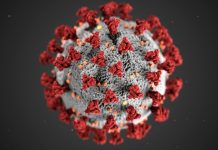When it comes to life sciences, there’s a whole lot of sensitive data floating around, patient records, research findings, clinical trial data, and even intellectual property. It’s the kind of information that needs to be locked up tight, not just because it’s valuable, but because its loss could lead to real-world consequences. So, how do life sciences companies manage to keep all that data safe in a world that’s more digital and interconnected than ever?
Let’s break it down and dive into the best practices for keeping research and patient data under wraps, while also ensuring compliance with all those complex regulations. After all, cybersecurity in life sciences isn’t just a “nice-to-have”, it’s a must.
1) The Unique Data Security Challenges in Life Sciences
Before we get into how to secure data, it’s important to understand what makes life sciences data so tricky to protect. Unlike a lot of other industries, life sciences deals with a mix of medical records, research, and intellectual property. We’re talking about things like:
- Patient data: Confidential medical histories, treatment plans, personal identifiers, sensitive stuff.
- Clinical trial data: Information that could make or break drug development.
- Proprietary formulas: The secret sauce behind new medications and treatments.
In other words, hackers would love to get their hands on this data. Why? It’s worth a fortune! And that’s why life sciences companies face unique cybersecurity challenges. One wrong move, and the consequences could be catastrophic. From a data breach to regulatory fines, the risks are huge. That’s where life science cybersecurity comes in, making sure everything stays locked up tight.
2) Key Regulations Impacting Life Sciences Data Security
Okay, so now that we’ve established the challenges, let’s talk about the rules. The life sciences industry doesn’t get to just do whatever it wants with its data, it has to follow some pretty strict guidelines. Here’s a quick rundown of the big players:
- HIPAA (Health Insurance Portability and Accountability Act): This one’s a big deal in the U.S. It mandates how patient data should be handled and protected. If you’re working with healthcare data, you need to make sure that everything is kept confidential and secure. Don’t follow the rules? You could be facing hefty fines.
- GDPR (General Data Protection Regulation): If your life sciences company is dealing with data from anyone in the EU, you’re looking at another layer of security requirements. GDPR puts strict rules around how data should be stored, accessed, and shared.
- FDA Requirements: If you’re dealing with clinical trials, the FDA has guidelines that ensure data is kept accurate and secure. They’re all about maintaining the integrity of research.
These regulations may seem like a headache, but they actually help life sciences companies stay on track with their cybersecurity efforts. Following the rules not only keeps data secure, it also keeps you compliant and safe from legal trouble.
3) Best Practices for Protecting Research and Patient Data
Alright, so how do you actually protect all this data? Let’s get into the nitty-gritty. These best practices can go a long way in securing research and patient data:
Encryption: Lock It Down
Data encryption is like having a super-secure lock on your front door. Without the right key, no one can get in. When you encrypt data, even if a hacker manages to steal it, it’s completely useless without the decryption key. That’s why encryption is a must, whether the data is being transferred or stored.
Access Control: Who Gets the Keys?
Not everyone in your company needs access to all the data. By implementing role-based access control, you ensure that only authorized personnel can access certain types of data. After all, giving a marketing intern access to patient records is probably not a great idea, right?
Backup and Recovery Plans: Don’t Skip This
You’ve got your data locked up, but what if something goes wrong? Maybe there’s a system crash or a natural disaster. Without a solid backup and recovery plan, you could lose everything. Regular backups help ensure that you can quickly recover from a disaster and keep your operations running smoothly.
Secure Communication Channels: Keep It Safe
When you need to share sensitive research data or communicate with patients, don’t just send it over plain old email. Use encrypted communication channels to ensure that your data is protected while it’s on the move. Whether it’s emails, files, or messages, keeping everything secure is key.
4) Proactive Measures to Protect Against Cybersecurity Threats
So, you’ve got your data locked up, but what about hackers? How do you stay ahead of the game? Here are some proactive steps that life sciences companies can take to protect their data:
Threat Detection and Monitoring
Imagine you’ve set up an alarm system for your house. It’ll alert you if something’s wrong. That’s what threat detection and monitoring tools do for your data. By using advanced software, you can keep an eye on potential cyber threats and stop them before they even reach your data.
Penetration Testing: Test the Locks
Penetration testing is like hiring a professional burglar to see if they can break into your systems. It’s a way to identify weak spots in your security before someone else does. Regular testing helps ensure that your cybersecurity measures are up to par.
Employee Training: Make Sure Everyone Knows the Drill
It’s not just about tech tools, your team is the first line of defense. Phishing attacks, social engineering, and other tricks can easily fool even the most tech-savvy employees. By training staff on how to spot these threats, you’re reducing the risk of a successful attack.
5) The Role of Cybersecurity in Safeguarding Innovation in Life Sciences
Now, let’s take a moment to think about what’s at stake here, innovation. Life sciences companies are working on breakthrough treatments, cures, and medications that can change the world. And that intellectual property is priceless. If that data gets compromised, not only could it set back research efforts, but it could also give competitors an unfair advantage. Protecting your research data with strong cybersecurity is essential for maintaining that competitive edge and safeguarding the future of healthcare innovation.
6) Preparing for the Future of Data Security in Life Sciences
As technology evolves, so do the threats. That’s why life sciences companies need to stay one step ahead when it comes to cybersecurity. What’s on the horizon? Maybe we’ll see more use of AI to detect and prevent cyber threats, or perhaps blockchain will make a huge impact on data integrity.
The key is to stay flexible and always be prepared. Cybersecurity is a constantly moving target, and life sciences companies need to be proactive about staying up-to-date on the latest tools and best practices.
Conclusion
At the end of the day, life sciences companies are dealing with data that’s not only valuable but crucial to patient health and scientific progress. Protecting that data isn’t just a legal obligation, it’s a moral one. By following best practices, staying compliant with regulations, and staying proactive against cyber threats, you can ensure that your company stays ahead of the curve.
Because let’s face it, data security isn’t just about protecting information; it’s about protecting people’s lives.













































